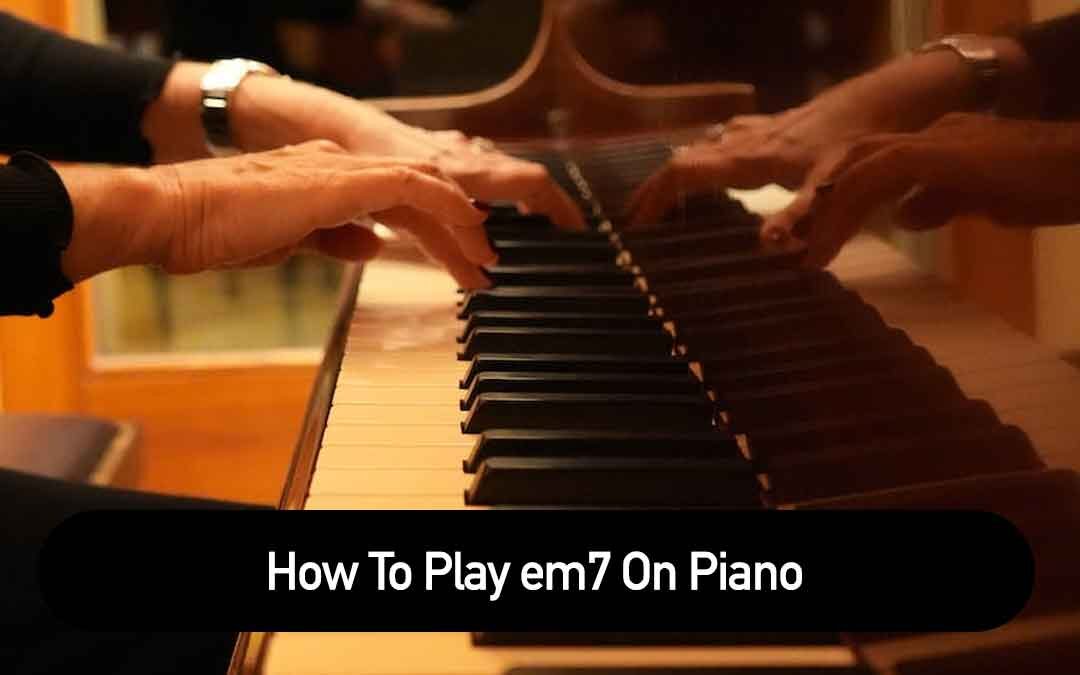Do you want to learn How To Play Em 7 Chord On Piano? If so, you’ve come to the right place!
The Em7 chord is a very popular chord used in many popular songs and styles of music. It is also an essential piano chord to learn for any budding pianist. Fortunately, understanding how to play the Em7 chord on piano is relatively easy.
In this blog post, I will explain what the Em7 chord is and provide you with a step-by-step guide on how to play it on the piano.
So let's get started!
What is an Em7 Chord?
An Em7 chord is a minor seventh chord built on the E minor scale. It consists of four notes E, G, B, and D. This piano chord is called Em7, E minor 7, and E min7.
To understand the intervals that make up an Em7 chord, let's break it down step by step. The Em7 chord consists of three intervals: a minor third, a major third, and a minor third.
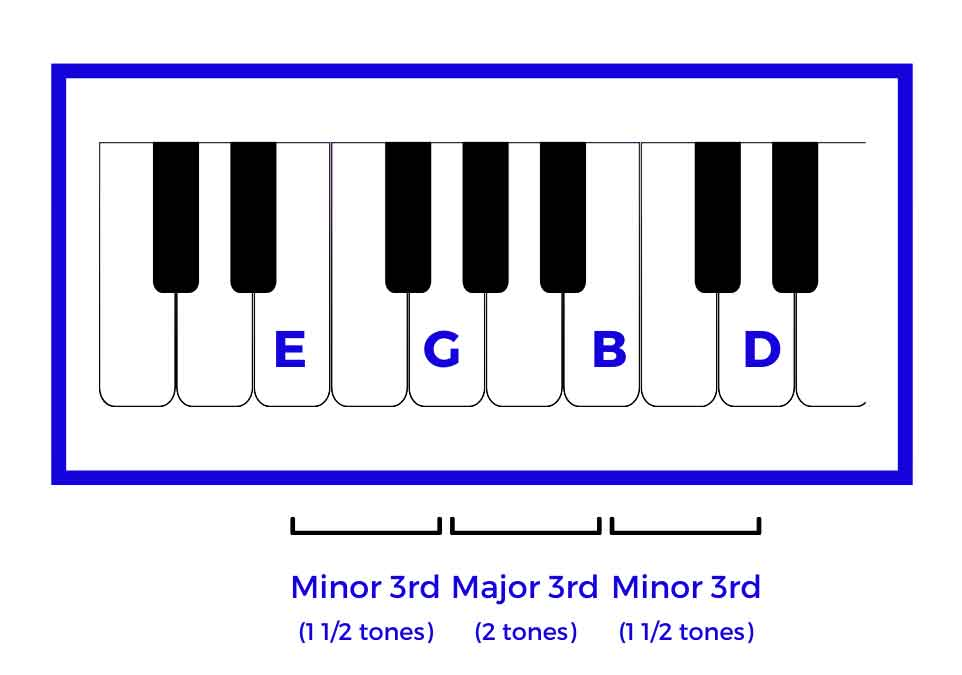
Between the notes E and G, it’s a minor third interval made up of one and a half tones or half steps. To find this interval, start on the root of the chord (E), skip two half steps (F and F#), and land on the 3rd half step, which is the minor third of the chord (G).
Between the notes G and B, it’s a major 3rd made up of two tones. To find this interval, start on G, skip three half steps (G#, A, and A#), and land on the fourth half step (B).
Between B and D, there's also a minor third made up of one and a half tones. To find this interval, start on B, skip one and a half steps (C and C#), and land on the flat seventh of the major scale (D).
To play an E minor 7th chord on the piano, you'll need to locate the keyboard's E, G, B, and D keys and play them simultaneously with your right hand.
How To Play Em7 Chord On Piano
Now that we've explained what an Em7 chord is on a piano, it's time to learn how to play it!
But before we learn to play the Em7 piano chord, we must first understand piano finger numbers. Piano players use piano finger numbers to identify which fingers to use to press the piano keys.
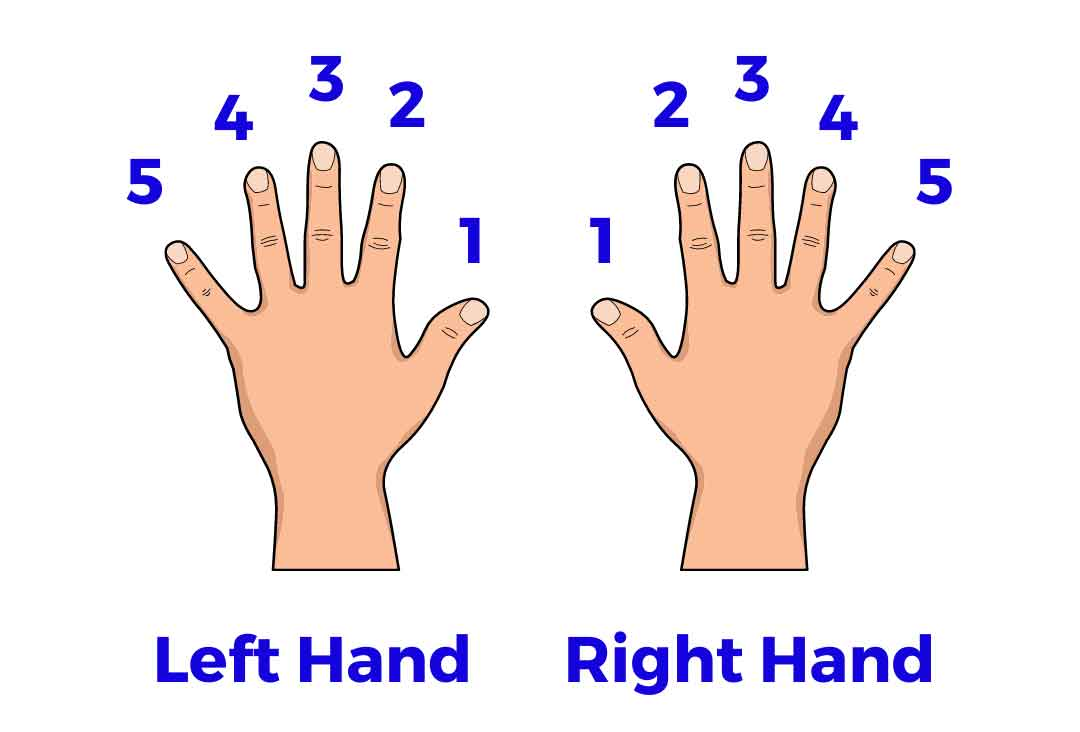
On either hand, the thumb represents the number 1, two represents the index finger, three represents the middle finger, four represents the ring finger, and five represents the pinky finger.
Now let’s learn to play the Em7 piano chord!
Let's first look at the root position of the Em7 chord. When a chord is in the root position, it means that the keynote of the chord (in our case, E) is the lowest note of the chord.
You should use your thumb (first finger), 2nd, 3rd, and 5th fingers to play the notes E (right above middle C), G, B, and D.
Often, the Em7 piano chord acts as the second degree to an A7 chord.
In the root position, the notes of the Em7 chord are in the sequence E – G – B – D.
To play the chord with the right hand in the root position, you will need to place your fingers on the keys as follows: E with finger 1 (thumb), G with finger 2, B with finger 3, and D with finger 5. Using the correct fingerings is essential, as this will help you play the chord smoothly and accurately.
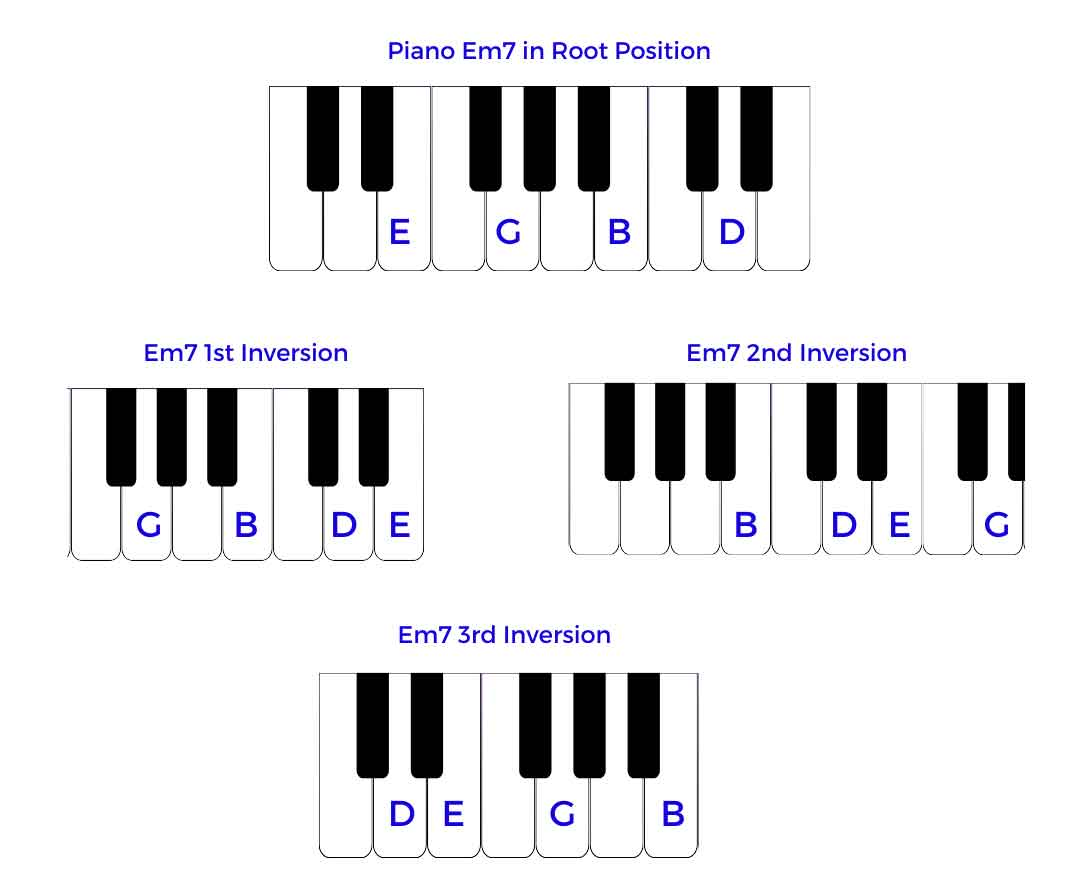
There are several other voicings or inversions for the Em7 chord that you can explore.
In the first inversion, the notes of the Em7 piano chord are in the sequence G – B – D – E. In this voicing, the note E is one octave higher than the root position.
To play the first inversion of the Em7 chord, you’ll need to place your fingers on the keys as follows: G with finger 1 (thumb), B with finger 2, D with finger 3, and E with finger 5.
In the second inversion, the note sequence is B – D – E – G. To play this voicing; you will need to raise the note G one octave higher and place your fingers on the keys as follows: B with finger 1 (thumb), D with finger 2, E with finger 3, and G with finger 5.
Now let's learn how to play a third inversion of the Em7 chord. To do this, you will need to raise the B note by one octave, resulting in the note sequence D – E – G – B.
To play this voicing, you will need to place your fingers on the keys: D with finger 1 (thumb), E with finger 2, G with finger 3, and B with finger 5.
Note: You can watch this video to learn how to play the piano E minor seventh (Em7) chord.
As you can see, the E minor 7 chord has several voicings and inversions you can explore on the piano. By practicing each of these voicings and becoming comfortable with them, you will be able to add more depth and variety to your music.
FAQs
Can I Use Em7 Chords In Any Musical Style?
The em7 (E minor seventh) chord can be used in various musical styles, including jazz, blues, funk, and pop. They can add a sense of tension and resolution to a song and create different moods and emotions.
Can I Play the Em7 Chord with the Left Hand Instead of the Right Hand?
Yes, you can play the Em7 chord with either hand, depending on what sounds best in the context of your music. When playing the Em7 chord with the left hand, you will need to use a different finger placement than when playing with the right hand.
To play the first inversion of the Em7 chord with the left hand, you’ll need to place your fingers on the keys as follows: G with finger 5 (pinky finger), B with finger 3, D with finger 2, and E with finger 1.
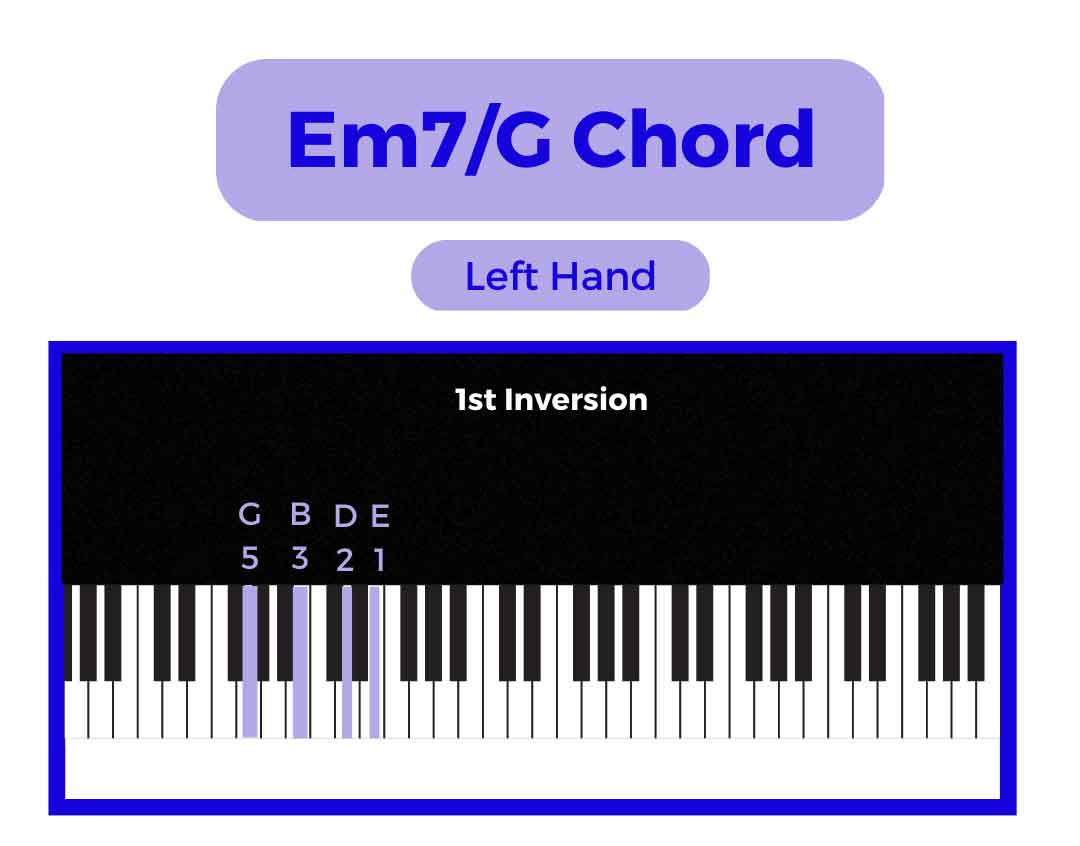
Can I Play the Em7 Chord in Different Octaves?
Yes, you can play the Em7 chord in different octaves depending on what sounds best in the context of your music. Playing the chord in a different octave can add variety and interest to your music.
To play the Em7 chord in a higher octave, you will need to find the notes E, G, B, and D on the keyboard higher up from their original positions. You will need to find the notes lower down on the keyboard to play the chord in a lower octave.
Conclusion
Learning how to play the Em7 chord on the piano is easy. Following the steps outlined in this article, you can easily learn how to play the Em7 chord in the root position and its various inversions and voicings.
With practice and dedication, you can master this chord and use it to enhance your musical creations. Practice and dedication will help you become an expert at playing piano chords.
Whether you are playing a solo piece or accompanying a singer, the Em7 chord adds depth and emotion to your music.
So, start playing and see what magic you can create with the Em7 chord on the piano!
Harlan Kilstein began playing piano during covid with no piano background at all. He taught himself how to play learning what to do and what not to do.
Today he's an advanced intermediate player and can help you grow in your skills because he learned all this on his own.

